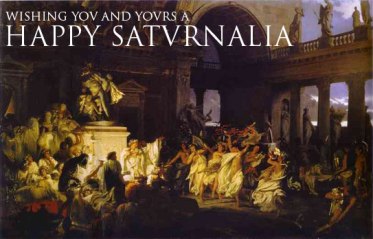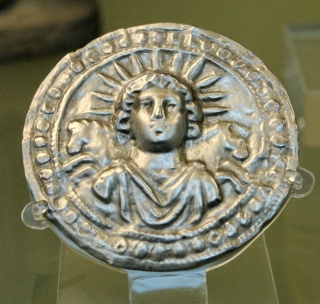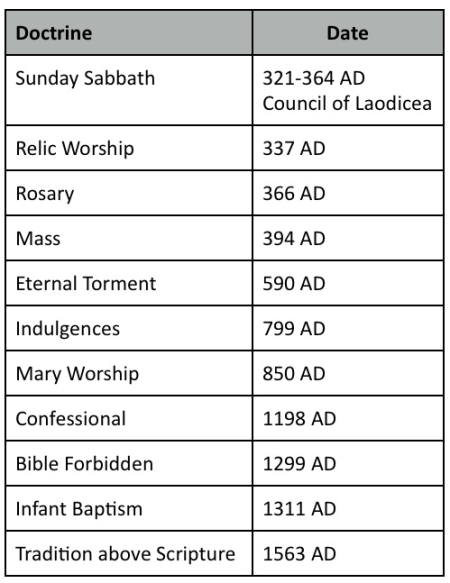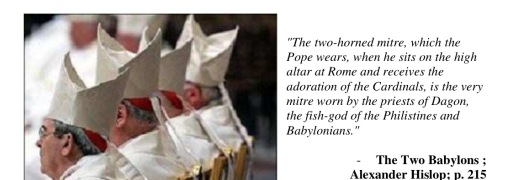Tags
atheism, Atheist, bible, catholicism, christianity, history, judaism
 “IO Saturnalia!”. This would have been the seasonal greeting heard all over Europe and the Roman Empire.
“IO Saturnalia!”. This would have been the seasonal greeting heard all over Europe and the Roman Empire.
For seventeen days from the 17th December the party season was celebrated with decorations, wreathes, banquets and present giving and good will to all men. It sounds awfully familiar!…
Saturnalia originated as a farmers festival and commemorated the dedication of the Temple of Saturn, God of Agriculture.
- 19th December – The Opalia – festival day of Saturn’s consort Ops
- 21st December – Yalda- Birthday of Mithras – celebrated with dried fruits and nuts
- 23rd December – The Sigillaria- Present giving
- 25th December – Birth of the “invincible” Sun God, Sol
It would indeed be interesting to note that if an ancient Roman were to drop in over our festive season, he would feel right at home. In fact many pagans would feel the same,for our Christmas Trees, Mistletoe and carol singing would all be familiar.
SO WHO’S BIRTHDAY ?
 So who’s birthday is the whole of the “christian world” celebrating? They call it “the birth of christ”, but what christ are we talking about? The word “christ” is merely the translation of the Greek word “christos” literally “anointed one”.
So who’s birthday is the whole of the “christian world” celebrating? They call it “the birth of christ”, but what christ are we talking about? The word “christ” is merely the translation of the Greek word “christos” literally “anointed one”.
So lets take a closer look and see if we can solve this puzzle of why the world celebrates the birth of a “christ” on a day not mentioned in their fictional biblical texts.
In the History of Rome by Michael Grant :-
Yet there was also another pagan belief during this same epoch, that competed with christ for the control of the western world. this was the cult of the Sun, which was revered by millions of the inhabitants of the Roman Empire, and its religion for a time even became the state worship…
In Rome, the divinity of the Sun came very early on; and then, centuries afterwards, in the superb dome of Hadrian’s Pantheon, the central opening, surrounded by star like rosettes, represented the solar orb… Before long, the Emperor Aurelian established a massive temple of the Unconquerable Sun as the central and focal point of the entire religious system of the state. The birthday of the god was to be on December 25th and this transformed into Christmas Day for the new christian cult
We can read more about this profound “plot” to turn paganism into christianity in a book by historian Jake Finegan, Myth & Mystery: An Introduction to the Pagan Religions of the Biblical World:-
…but the worship of the sun-god continued widely throughout the Empire, and under Aurelian ( 270-275 AD) the cult was restored to its former high estate. In the year 274 AD Aurelian declared the god.. now called Deus Sol Invictus the official deity of the Roman Empire; he built a splendid temple of the sun in Rome and et the suns birthday celebration as 25th December. In the time of Constantine the cult of Deus Sol Invictus was still at its height and the portrait of the sun god was on the coins of Constantine.. likewise it must have been in this time and with the intent to transform the significance of an existing sacred date to that of the birth date of Jesus, which had previously been celebrated in the east on 6th January. The christmas date first appears compiled in 336 AD and published in a Roman calendar, edited by Filocalus for the year 354 AD
So are we beginning to get the picture? A date taken by the new christian cult ( it may be worth mentioning in passing that the word “Christmas” also incorporates the pagan origins of “Mass” – the ‘alter’ used in Catholic Mass is the alter of sacrifice originally used in pagan rituals). Christmas surprisingly not celebrated in the first four centuries of the young religion points us to the fact that in truth Christianity is pagan at its core.
INFLUENCE OF CONSTANTINE
There is no doubt Christianity developed within the Roman Empire. Constantine was originally a devout follower of Mithraism and you can read more about him in a previous post.
Paganism was not defeated by christianity, paganism evolved into the practices you see today. Only the names have changed and in some cases not even that… Eostre 😉
H G Wells in his “Outline of History” discusses the transformation of the Jewish texts
The observance of the sabbath again transferred to the Mithraic Sun-day is an important feature of many christian cults.
THE CATHOLIC PAGAN TRADITIONS
The Catholic church makes tradition above or equal to scripture, but in actual fact many of its traditions actually stem from pagan sun worship. Its teachings, beliefs and practices come from Mithraism.
Roman Catholic doctrines such as baptism, teachings on death and immortality, celibate priests, prayers to the dead and to relics, repetitive prayers with the use of beads, doctrines on forgiveness of sin, teachings on hell, the mass and Sunday worship are all doctrines derived from Ancient Babylon, not the Bible. Infact any Jew will tell you all of the above are abhorrent and against their gods law.
like the successive strata of the earth covering one another, so layer after layer of forgeries and fabrications are piled up in the church
In fact many of Rome’s documents used to validate its authority and origin have been established as false. It created what we see today over time:-

In 1854 the papacy declared Mary sinless, and in 1951 declared she had ascended to heaven. This is called the “Assumption of Mary”. Since then the complete system of Babylonian worship has been established in Catholicism.
The Goddess in Ancient religions was revered as a life giver and nurturer, phallic symbols were common in ancient temples and they are equally common in Roman Catholic Cathedrals.
Did you know the wafer used in mass is a symbol of the sun? The rebirth of the sun god was celebrated by the eating of round bread in Babylonian times, and was common in Mithraism and Osiris worship. Historian Alexander Hislop mentions it :-
And here in a so called christian church, a brilliant plate of silver in the form of the sun is so placed on the alter, tat everyone who adores at the altar must bow in lowly reverence before that image of the sun. Whence I ask, could that have come, than from the ancient sun worship or the worship of Baal? And when the wafer is placed so that the silver sun is fronting the round wafer, whose rounds is important an element in the Romish Mystery, is only another symbol of Baal, or the sun, what can be the meaning of it, but to show to those who have eyes to see that the wafter itself is only a symbol of Baal?
The papal ‘Pontifex’ can also be traced back to the Babylonian religion. The keys the Pope wears around his neck are not the keys of Peter, but rather they date back to Babylon, when it was supposed that this representative of God had the power to unlock heaven or hell.
Makes you think about every aspect of the christian fiction doesn’t it?
IN CONCLUSION
When you gather around the christmas tree and unwrap your presents you are taking part in a tradition that goes back thousands of years, long before christianity was invented.
So if you are ever asked the question “Do some christmas traditions have a pagan origin?” you can ask them to re phrase it too ” Does any part of christmas have a christian origin?”
Happy Saturnalia to you all
Remember pagan traditions are all about giving and goodwill to all men…
FOR FURTHER READING
Pagan Origins of the Christ Myth – John G Jackson
Pagan Christianity – Frank Viola
Acamademia.edu
Hellenistic ‘Judaism’ and the Social Origins of the Pagan-Christian Debate – Douglas Boin
Pagan Roots of Christianity – Andre Knighton
Christianity: The Great Deception – Rev Sha’ul


“Does any part of christmas have a christian origin?”
I think you could take this further and ask, “Do ANY christian traditions have a christian origin?”
The answer must be a resounding NO.
After all, they can’t even keep their own history straight. The Holy Roman Empire didn’t become officially christian until at least 80 years after Constantine died.
A religion built on a foundation of lies… There’s a thing 😉
LikeLiked by 1 person
By golly u’ve got it 😊😊😊😊😊
LikeLiked by 1 person
I don’t think Christians today would put up with many of the teachings of Jesus Christ
Paul, future church ‘fathers’ and even lowly scribes changed Christianity to the point where Jesus himself would wonder what had happened to his teaching
LikeLiked by 1 person
If he ever actually existed 😉
LikeLike
Biblical scholars including Bart Ehrman and Robin Lane Fox have persuaded me that Jesus was a real historical figure. I think he was an ordinary human being, conceived in the usual way, and born in the manner in which that all human beings are born He was an itinerant Jewish teacher whose message was apocalyptic. Furthermore I have concluded from my reading etc that his message was strictly for the Jewish people. Paul and his followers altered the teachings of Jesus to make it more attractive to a wider audience The leaders of the Jesus Movement centred in Jerusalem certainly did not agree with Paul’s brand. Neither did they believe Jesus was the literal son of God. All the rediculous trappings of modern Christianity have been manufacture through the centuries and have very little to do with Jesus or what he taught. An accretion of Christian theology based on nothing but human imagination and machinations ,IOM rubbish. He was a Jew, teaching Jews and never said that he was founding a new religion. I do think that he ever claimed to be God. The claim was made for him
Lane Fox thinks the Gospel of John ( where Jesus’s supposed claim to be God is used against him, John 10:33) has the evidence of a living primary source. Seems unlikely 60 to 70 years after the fact doesn’t it. Even if true memories over that length of time fade and come back in new versions. More detailed and more spectacular with each retelling
The only source we have to learn anything of Jesus is the New Testament. Written by people who never knew him (I think) in Greek, decades after the fact using unknown sources. We do not have anything close to the original Greek copies. There are many thousand of later copies. Some of the earliest copies do not have information that is included in later copies. What does that mean? Additions? There are scribal errors, deletions, additions and changes. What does that mean.? Accident or intentional?
My conclusion is that a very thin veneer of possible truth covers a huge mountain of legend, borrowed mythology, theology tradition, error, misinformation and outright lies. And this does not even go into the matter of people changing the various stories to suit their own ends
Happy Winter Festival
LikeLiked by 1 person
Well there is one thing Jesus wouldnt be and thats a christian lol 😉
LikeLiked by 1 person
I am certain they he was and would still be a Jew.
LikeLiked by 2 people
Really interesting, so I can enjoy Christmas freely in the knowledge that it isn’t really a ‘Christian’ festival anyway. Thanks!
LikeLiked by 2 people
You are very welcome…. Lo Saturnalia to you 😘
LikeLiked by 1 person
Where did you go ?????????
LikeLike
Just taking a twitter break… Sometimes the trolls get me down…
I will be back ☺️☺️
LikeLike
Pingback: “IO Saturnalia!” – Hem's Rome